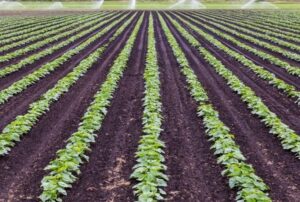7 Ways to Understand Fertigation Meaning

Fertigation meaning refers to the process of applying fertilizers through an irrigation system, and it has become a crucial practice in modern agriculture. Understanding fertigation meaning is essential for farmers looking to maximize their crop yield, conserve water, and improve soil health. As agriculture evolves, the importance of integrating efficient fertilization techniques like fertigation cannot be overstated. In this post, we will explore 7 ways to understand fertigation meaning and its significant impact on agriculture, including its benefits, systems, and how it’s transforming farming practices worldwide.
1. Fertigation Meaning: An Overview
Fertigation meaning is relatively straightforward—it’s the practice of combining fertilization and irrigation into one process. By delivering nutrients directly to the plants through irrigation water, fertigation ensures even distribution and promotes optimal plant growth. This system allows farmers to have more control over nutrient delivery, reducing the chances of over or under-fertilizing crops.
Key Components of a Fertigation System
A fertigation system includes:
- Injection equipment to introduce fertilizers into the water supply.
- Irrigation system such as drip, sprinkler, or central pivot systems to distribute the water and nutrients.
2. Advantages of Fertigation in Agriculture
One of the most significant advantages of fertigation in agriculture is its ability to increase fertilizer efficiency while minimizing wastage. Fertigation systems deliver precise amounts of nutrients, which improves nutrient uptake and reduces runoff that could harm the environment.
Benefits of Fertigation Systems
- Water and nutrient savings: Fertigation reduces water wastage and ensures nutrients are available at the root zone.
- Improved crop yields: By optimizing nutrient delivery, plants receive what they need, boosting productivity.
- Sustainability: Less fertilizer runoff means a smaller environmental footprint, making fertigation a sustainable agricultural practice.
The Importance of Pulse Crops in Sustainable Agriculture
3. How Fertigation Systems Work: A Deep Div
The fertigation system works by combining a nutrient-rich solution with irrigation water, delivering both directly to the plants’ root zone. This is commonly achieved using drip irrigation, sprinklers, or center pivot systems. Each system has its advantages depending on the crop type, soil condition, and water availability.
Fertigation Farming Techniques
- Drip Irrigation: Ideal for crops that require frequent, low-volume irrigation.
- Sprinkler Systems: Best suited for crops that need uniform water distribution.
- Center Pivot Systems: Often used for large-scale farming operations.
4. Fertigation Meaning in the Context of Soil Health
Fertigation meaning extends beyond delivering nutrients—it plays a pivotal role in improving soil health. By providing nutrients directly to the root zone, fertigation reduces soil compaction and promotes healthy microbial activity.
How Fertigation Benefits Soil Health
- Reduces soil erosion: Controlled irrigation minimizes water runoff, preventing soil erosion.
- Improves soil structure: Regular, moderate watering and nutrient delivery support the soil’s physical integrity.
5. The Economic Impact of Fertigation in Agriculture
Fertigation in agriculture is not only beneficial for the environment but also for farmers’ bottom lines. By optimizing fertilizer use and minimizing waste, fertigation helps farmers save money on input costs, such as water and fertilizers. Additionally, the ability to boost crop yield translates into higher revenue potential for farmers.
Case Study: Fertigation in Wheat Farming
For example, wheat farmers who have adopted fertigation report improved yields with lower fertilizer usage. This technique has also shown promise in increasing profitability in various regions.
A Comprehensive Guide for Wheat Crop Cultivation)
6. Fertigation System Maintenance: What Farmers Should Know
Maintaining a fertigation system is crucial to its efficiency and longevity. Regular checks for leaks, ensuring the correct mixing of fertilizers, and keeping the irrigation system clean are essential maintenance practices.
Best Practices for Fertigation System Maintenance
- Regular flushing of the system: Prevent clogging in drip irrigation.
- Use of filtration systems: Filters help remove impurities that can damage the fertigation system.
- Calibrating fertilizer injectors: Ensures the right amount of nutrients is delivered to crops.
7. The Future of Fertigation in Agriculture: Trends and Innovations
As technology advances, fertigation systems are becoming more sophisticated, offering farmers even greater control over nutrient delivery. The future of fertigation in agriculture lies in precision farming technologies, such as sensors and automated systems that adjust irrigation and fertilization based on real-time crop and soil conditions.
Technological Innovations in Fertigation
- Automated fertigation systems: Automatically adjusts water and nutrient delivery based on real-time data.
- Sensor-based irrigation: Allows for precise water and nutrient application, reducing waste and improving crop health.
Advanced Technology Trends in Modern Farming
Conclusion: Understanding Fertigation Meaning for Sustainable Agriculture
Fertigation meaning goes far beyond just combining fertilization and irrigation—it represents a shift toward more sustainable and efficient farming practices. By embracing fertigation systems, farmers can optimize water and nutrient use, improve crop yields, and reduce environmental impact. As agriculture continues to evolve, fertigation will undoubtedly play a key role in promoting sustainability and ensuring food security for future generations.













Post Comment